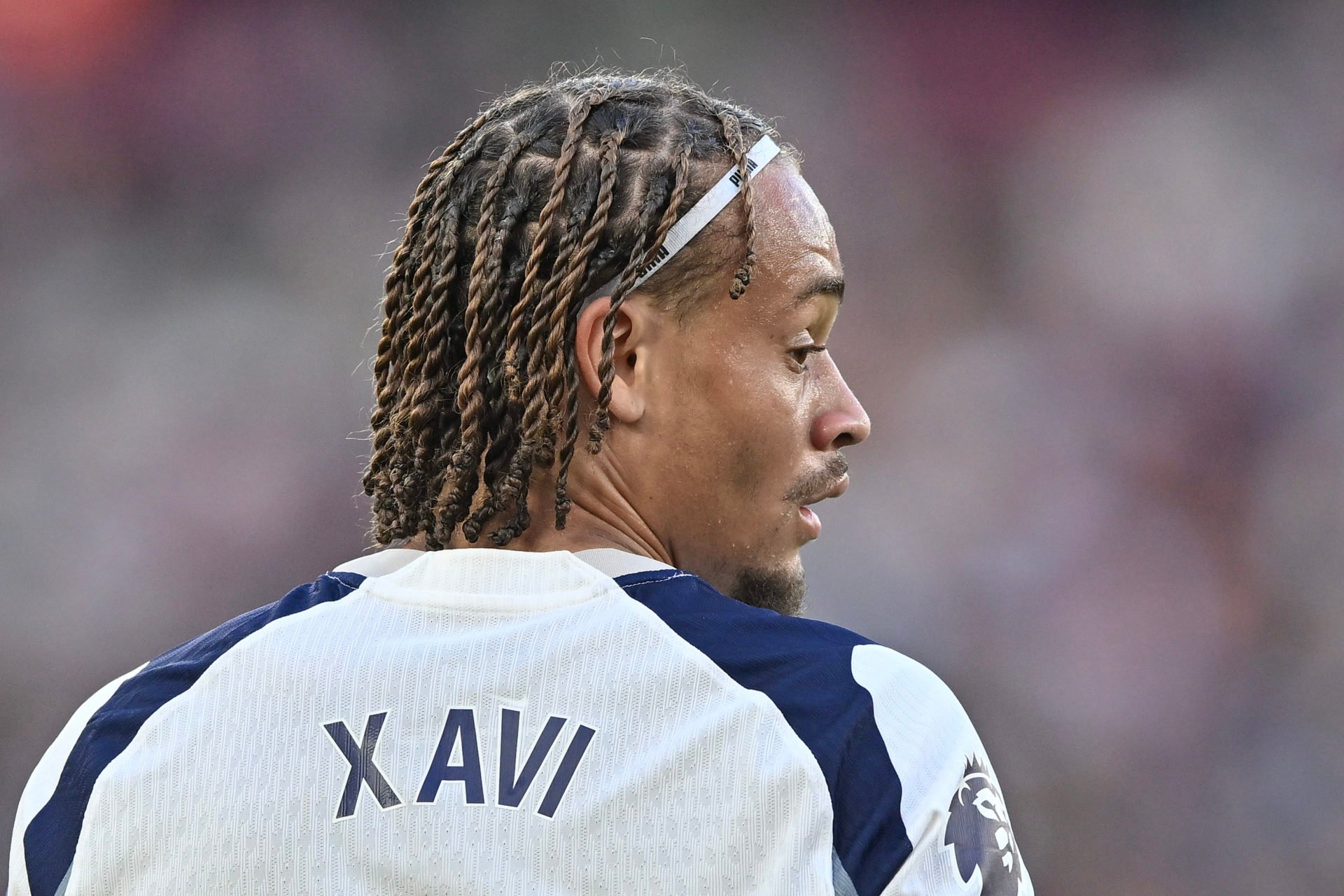The summer transfer window saw intense competition for Europe’s top talents, and Xavi Simons was no exception. Both Chelsea and Tottenham were keen to secure his signature, but ultimately, he chose Spurs. Now, his agent has shed light on the reasons behind this decision, revealing the constraints that hampered Chelsea’s pursuit. This article delves into the details of the transfer saga, exploring the factors that separated the two London clubs in the race for the talented midfielder and providing an update on Nicolas Jackson’s loan deal.
Chelsea’s Interest in Xavi Simons
Chelsea’s interest in Xavi Simons was no secret, with the club reportedly making him a key target during the transfer window. However, despite their interest, a deal failed to materialize. Xavi’s agent, Ali Barat, has now revealed why Chelsea’s move for Xavi Simons didn’t progress. In an interview, Barat explained that while both Chelsea and Tottenham were attractive options with solid projects, Chelsea faced certain constraints that made it difficult to move forward with discussions.
‘Tottenham and Chelsea are both fantastic clubs with solid projects, and there was real interest from both sides,’ Barat stated. ‘But Chelsea was always clear with us, they had certain constraints that made it difficult to move forward with discussions.’ These constraints likely relate to Chelsea’s wage structure and their emphasis on performance-based incentives, making it challenging to match the offer made by Tottenham.
Tottenham Secures Xavi Simons
Tottenham’s successful acquisition of Xavi Simons was a significant coup for the club. Spurs moved swiftly to secure the midfielder, offering a package that Chelsea was unable to match. This move highlights Tottenham’s ambition and their willingness to invest in top young talents, strengthening their squad for the upcoming season. With Xavi Simons joining their ranks, Tottenham adds a creative and dynamic player to their midfield, enhancing their attacking options and overall squad depth.
Fabrizio Romano reported that Xavi Simons to Tottenham was a done deal. All SIGNED between Spurs and RB Leipzig for fee worth €60m fixed after agreement revealed overnight. Xavi has completed his medical and his contract is also now signed. Contract until 2030 + 2 year option.
Wage Structure as a Deciding Factor
One of the primary reasons for Chelsea’s inability to secure Xavi Simons was their wage structure. The club has adopted a policy of prioritizing performance-based incentives over high base salaries, particularly for young players. This approach contrasts with Tottenham’s offer, which reportedly included a higher guaranteed wage. The figure floated after his move to Spurs was £195,000 per week. This does not comply with BlueCo’s policy for young players, as evidenced by Enzo Fernandez and Mudryk, two other young attackers who signed deals worth £110,000 per week.
Chelsea’s approach to wages is evident in the contracts of other young players like Enzo Fernandez and Mykhailo Mudryk, who earn around £110,000 per week. Even star player Cole Palmer earns a wage of £130,000. Simons clearly felt he deserved more and this was a non-negotiable. This policy, while fiscally responsible, can make it difficult to compete for players who demand higher base salaries, ultimately costing them the chance to sign Xavi Simons.
Agent Ali Barat on Nicolas Jackson Loan
In addition to discussing Xavi Simons, Ali Barat also provided insights into the Nicolas Jackson loan deal. Jackson, another client of Barat, recently moved to Bayern Munich on loan, and Barat shared details about the structure of the deal. He shared more details on the Nicolas Jackson loan, saying: “They have a mandatory purchase option if he plays 40 games, but they also have a €65 million option (if not).” The obligation is worth just shy of £70 million, dependent on the Senegalese striker making 40 appearances. But if he doesn’t reach that quota, the German champions still have a £57 million option.
Barat highlighted that Bayern Munich has a mandatory purchase option if Jackson plays a certain number of games, as well as an option to buy him outright. These details provide clarity on the financial terms of the loan and the potential for Jackson to secure a permanent move to the German club. Chelsea will want him to do well, especially now that they have faced Bayern. It would save them the job of finding a new suitor next summer.
Implications for Chelsea
Missing out on Xavi Simons and the loan deal of Jackson has implications for Chelsea’s squad and their future transfer strategies. The club may need to reassess their wage structure and transfer policies to remain competitive in the market for top talents. While their focus on financial sustainability is commendable, it must be balanced with the need to attract and retain high-quality players who can contribute to the team’s success. The decision not to compromise for Simons is understandable; however, seeing him play for a London rival will have some Chelsea fans pulling their hair out nonetheless.
Chelsea’s inability to secure Simons also highlights the importance of adaptability in the transfer market. As other clubs become more aggressive in their pursuit of talent, Chelsea may need to adjust their approach to ensure they don’t miss out on key targets. By learning from this experience, Chelsea can refine their strategies and improve their chances of success in future transfer windows.
Conclusion
The transfer saga of Xavi Simons and the details surrounding Nicolas Jackson’s loan deal offer valuable insights into the complexities of modern football transfers. Chelsea’s inability to secure Simons underscores the challenges posed by their wage structure, while Tottenham’s successful acquisition demonstrates their ambition and willingness to invest. As Chelsea moves forward, they must carefully consider these lessons to optimize their transfer strategies and build a squad capable of competing at the highest level. Ultimately, the success of both Simons and Jackson at their respective clubs will serve as a further testament to the intricate dynamics of player transfers and the ever-evolving landscape of European football.

Leave a Reply